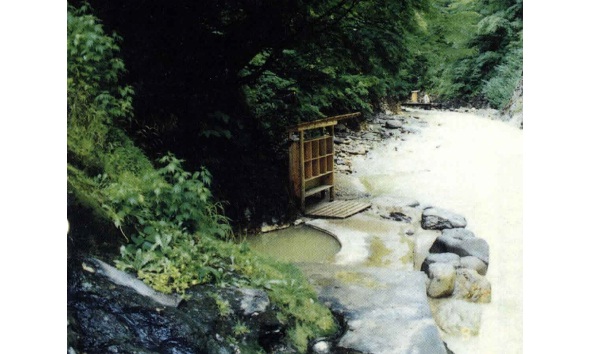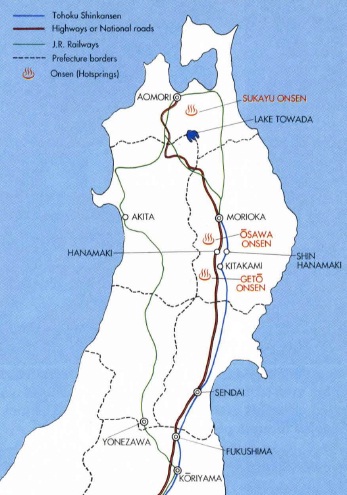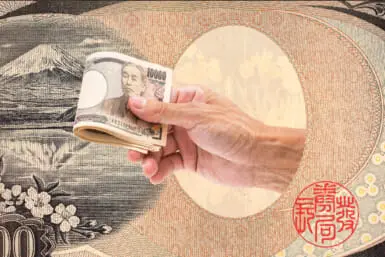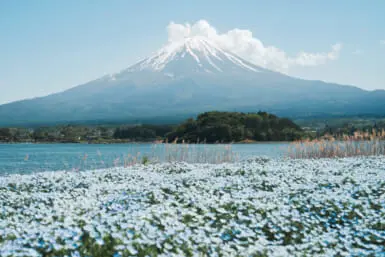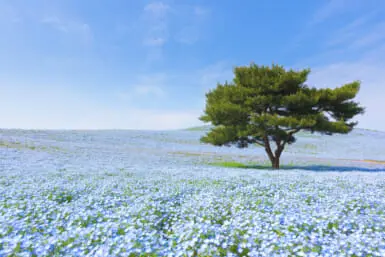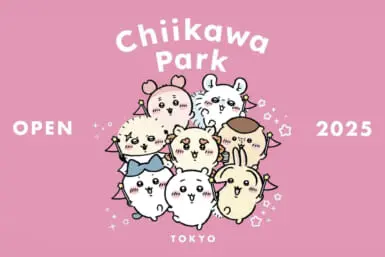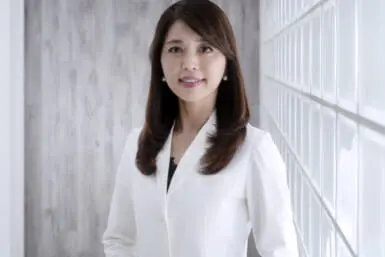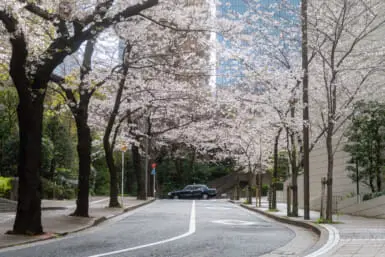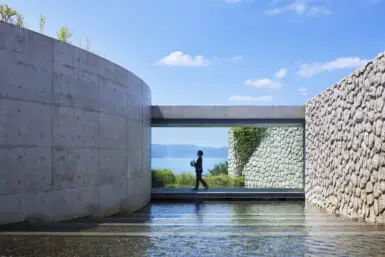by Jeff Manning
I remember my first impression when I picked up the travel brochure and started to read. WOW! Of course, there was the same old hype about food and scenery—and heaven knows I’d seen enough of that to take it too seriously. But what caught my eye about this particular hot spring was the variety of bathing pools it had to offer. The pamphlet said there were four outdoor rotenburo as well as indoor facilities— plus a bath inside a cave a short, scenic hike from the inn or ryokan.
I was becoming really interested now. There’re fewer things better than the chance to soak away the hours in an open-air rotenburo, surrounded by Mother Nature in her finest plumage. But to have several choices!
Turning back to the brochure, I made a mental note of the name of the hot spring and how to get there. Geto Onsen (pronounced “ghetto”) is not to be confused with Gero Onsen, more famous and more of a tourist trap. Geto Onsen which, according to the pamphlet, has that “untouched by the passing of time” feel about it; has for its setting, the quiet serenity of the mountains of Iwate Prefecture in northeastern Japan and consists of several ryokan and hotels built on and around a natural hot spring. Each has its own indoor bathing facilities which you can use whether you stay there or not for a small fee, as well as convenient access to the variety of outdoor baths.
It seemed like the perfect place to get away from it all, so I made up my mind then and there that I needed a vacation with Geto Onsen as my destination. The only thing left to do was decide when to go; even though the next open slot on my calendar was during the rainy season, I made reservations without hesitation.
After all, most people don’t travel during the rainy season, so everything is less crowded—a definite plus. In fact, an onsen trip is the only “outdoor vacation” I can think of in which you can enjoy yourself no matter what the weather might be. And some people believe—yours truly included—that the more bizarre the weather conditions are, the more exciting and memorable the onsen experience will be.
Stepping off the crowded Bullet Train into a mostly empty station was like a breath of fresh air. The noise level dropped and the pace of life slowed to a casual, country crawl. And, although the bus trip from the station began to resemble something like Mister Toad’s Wild Ride, still it felt good to leave the hustle and hassle of the city behind.
As the bus wound its way through ever-steeper mountain roads and passes, it began to rain—as was expected. A steady drizzle. What I didn’t expect was the temperature difference between the rain and the ground. With hidden volcanic activity below the surface, the contrast created steam which rose and hovered eerily around the dripping trees. Suddenly, I was in the Land That Time Forgot!
Everything about the scenery made it easy to make believe the bus driver and I had somehow gone through a time warp which transported us back to a prehistoric forest. Through the rain and steam, I could see waterfalls, mirror-like lakes and even mountains that looked like volcanos (and probably were). Better than any Spielberg movie set. I don’t think I would have been surprised (well, maybe a bit) to see a dinosaur lurking in the dense foliage or darting across the road behind the bus, or. ..
Once we reached the ryokan, I checked in and changed into my yukata, borrowed an umbrella and shuffled down the steep little path marking the way to the nearby river and the outdoor springs. All my expectations were fulfilled when I saw the variety of pools lining the river with the main rotenburo being the most impressive of all.
I emerged from the dressing room to face a huge, black, smoldering outcropping of lava rock with the steaming hot spring bubbling up from beneath. This main bath is the hottest because it’s closest to the source from which the other pools are fed. And I do mean hot! It may take you awhile to get used to it, but once you’re in, it feels heavenly. Don’t give up.
The temperature of the water in the other baths ranges from “just right” to “tepid” and offers a chance to build your tolerance gradually while also giving you a change of scenery.
The cave bath is kind of spooky, but fun, and the short walk includes a beautiful waterfall on the way. There are several trails and sights for the hiking enthusiast. The water itself contains calcium sulfate and is said to be good for settling stomachs. The variety in water temps between bathing pools is also said to be good for aches, pains and frayed nerves.
The Japanese meals served are very good, but there are also little restaurants and shops here and there if you get the munchies.
To get to Geto Onsen, take the Tohoku Shinkansen from either Tokyo or Ueno station and get off at Kita-kami. It’s a smaller station, so make sure your train stops there. It’s a pleasant three-hour trip through the Japanese countryside. At Kitakami Station, you transfer to a bus which takes about an hour to get to the hot spring. There are three or four buses during the day, so check the schedule when making reservations.
Prices for accommodations start at around ¥7,000 per person, but there are more deluxe packages, as well. All prices include two meals—dinner and breakfast. For more information, contact (in Japanese) Motono-yu Geto Onsen Hotel, (0197) 67-3931. Or Kankoso Ryokan at (0197) 67-3963.

